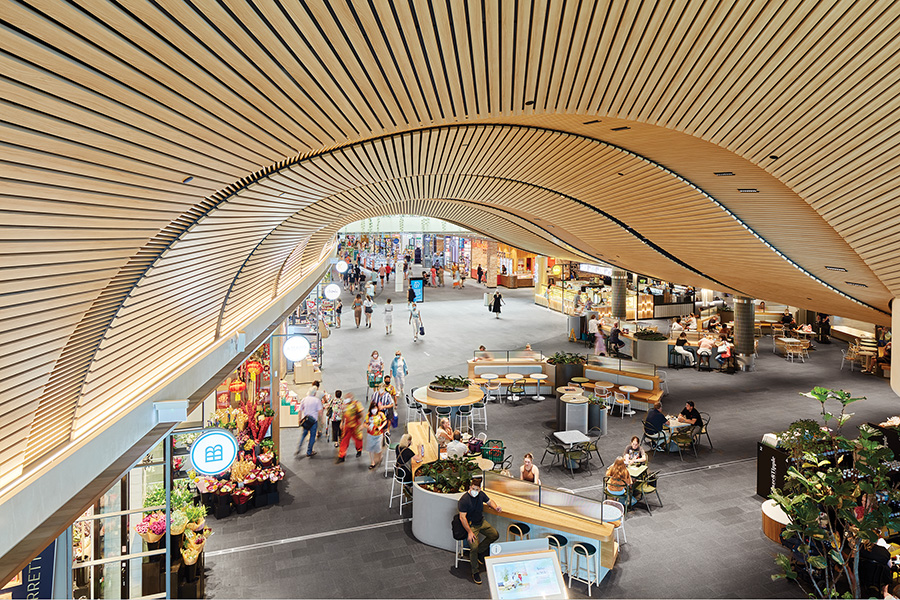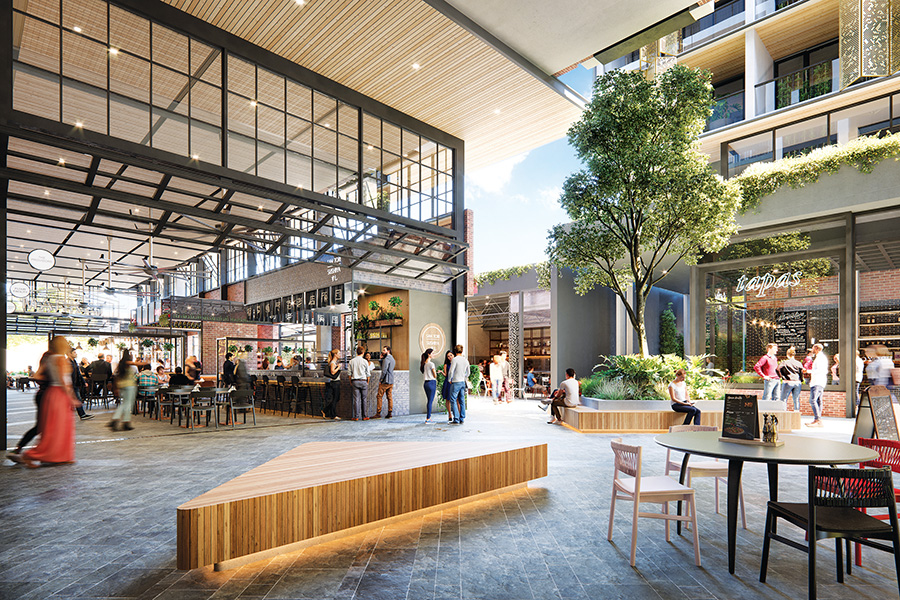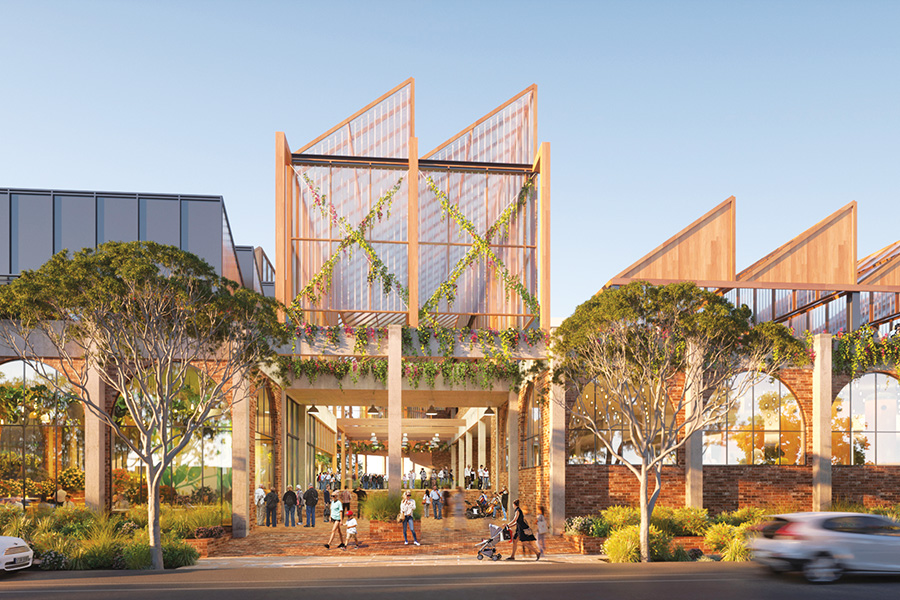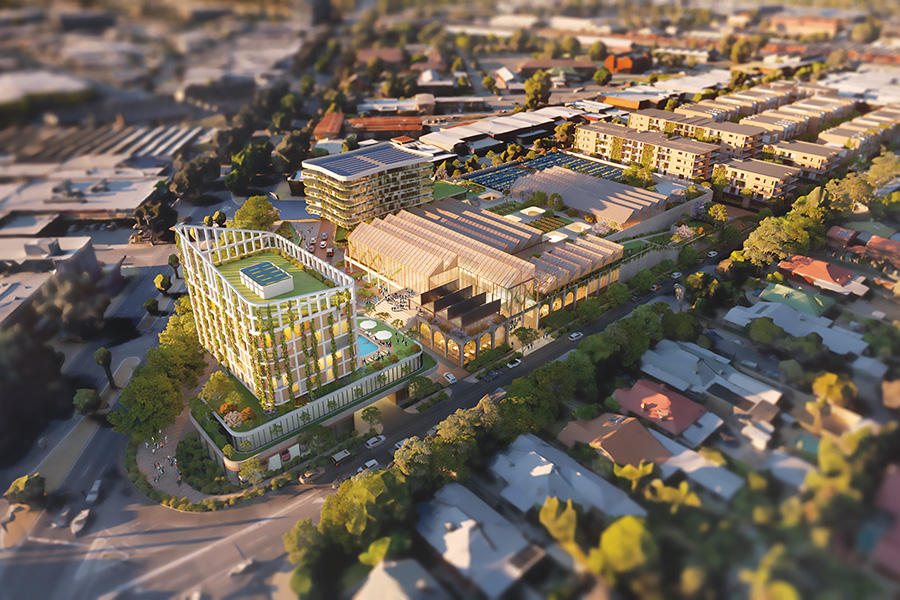Ongoing sustainability and social consciousness are the future for food retailers. Customers are increasingly preferencing businesses that are environmentally and socially ethical in practice – and expect that they are to be held accountable when they fail to do so. The following article by Talia Uylaki of Hames Sharley shows the beneficial connection between design and food retailing.
There are many global crises affecting food retail businesses and their consumers. Global warming and climate change is the major threat to our existence, especially when it comes to food security. The Intergovernmental Panel on Climate Change (IPCC) labels agriculture as one of the greatest contributors to emissions of greenhouse gas, and the World Resources Institute (WRI) states that agriculture makes up 25% of global greenhouse emissions. This is a significant percentage, and food retailers are increasingly asked to do their part in reducing greenhouse gas emissions as part of the food production cycle. Food security is threatened by global warming and climate change – and exacerbated by food wastage. As well as reducing their carbon footprint, food retailers should also focus on implementing food wastage mitigation strategies.
So, what are the current, and possible future initiatives food retailers in Australia have enacted to respond to the expectations of their consumers to be socially and environmentally proactive?

Karrinyup Shopping Centre, WA
Foodbank’s Hunger Report 2021 found that one in six adults didn’t have enough to eat, and 1.2 million children have gone hungry. Yet despite people going hungry around the world due to poverty, the rising cost of living, and environmental disasters impacting food production, the WRI’s food program, Champions 12.3, estimates that 32% of global food produced is lost or wasted from ‘farm to fork’. The Champions 12.3 studies into the “Business Case[s] for Reducing Food Loss and Waste” found that restaurants and hotels can save $7 for every $1 invested in reducing kitchen food waste. Thereby proving it is economically beneficial for businesses to invest in food wastage mitigation strategies. Partnering with food charities is just one option food retailers can undertake to ensure food is not left to rot in the bin but rather donated to those in need. By highlighting this partnership to their customers through the media and within stores, food retailers can advertise their recognition of the food wastage crisis and their active involvement in helping their local community.
When it comes to environmental campaigns, plastic bags became the first major symbol of Australian food retailers acting on social pressure to implement eco-friendly initiatives. As single-use plastic bags began to be gradually phased out of our supermarkets, some people grumbled about the inconvenience of bringing their own reusable bags to their weekly grocery shop, but by and large, the move has been met positively. However, our consumer demand for hyper-convenience and home deliveries has also seen an increase in plastic packaging. Food retailers should listen to customer complaints of excess packaging to find a solution that meets sustainable goals and the needs of a society that values hyper-convenience. One possible solution is for food retailers to invest in biodegradable packaging.
Another way food retailers have responded to environmental concerns is to promise consumers of their commitment towards net-zero emissions.
Minimizing the carbon footprint of supermarket shopping is a vital green initiative to support ongoing efforts to combat global warming. ‘Food miles’ is a term used to describe the distance food is transported from the place it was grown/made to the consumer; otherwise simply known as ‘farm to plate’. The more food miles a food product has travelled, the greater the emission of greenhouse gasses during the supply chain. Thus, buying local – and seasonal – produce reduces food miles and the resultant carbon impact.

Highpoint Shopping Centre, Maribyrnong by Hames Sharley
One way is for supermarkets, and other food retail businesses, to transition towards green infrastructure and renewable energy. Going forward, the built architecture of food retail businesses needs to reflect the sustainable and social goals of the businesses and the expectations of their consumers. Sustainable design is no longer good enough. We have moved beyond the point of design being sustainable to design that is regenerative.
Regenerative design aims to reverse the detrimental effects of human activity and climate change on the environment. This reflects the views of the ‘citizen shopper’, an emerging class of consumers who expect businesses to reflect their progressive views on environmental and social responsibility – and to do something about it.
A study by ReGenFriends in collaboration with Whole Health Marketing found that consumers ‘overwhelmingly’ favour patronising regenerative businesses that aim to “[do] good” and take “true accountability”, supporting the business case for regenerative practices.
A case study of some of the initiatives mentioned above can be seen in the new food-orientated retail and residential community in Forestville, SA, known as Locale. It was the Commercial Retail Group’s (CRG) vision, enabled by Hames Sharley, to future-proof the retail and residential development complex by recognising and addressing climate change in the design. As noted on the Renewal SA website for this development, the use of regenerative sustainability and vertical and horizontal green infrastructure is designed to enhance biodiversity. The development will include a rooftop Urban Farm – an example of urban architecture. The first of its kind in South Australia, the Urban Farm will showcase urban agriculture as an educational tool, accessible to the public. Fresh and organic produce from the rooftop Urban Farm will be sold within the development to various food retailers such as cafés and bars.
- Locale, SA
- Locale, SA. Images are for illustrative purposes only and are not indicative of final concepts
By sourcing locally grown produce, Locale will be helping its customers support sustainable food production as the ‘farm to plate’ food mileage is radically reduced to ‘store-rooftop to plate’.
The Urban Farm will also promote regenerative agriculture, urban architecture, and educate the students at the Urban Green School who will tend to the market garden. This role of education is a vital way in which food retailers can raise awareness of sustainable retailer and consumer practices.
Ultimately, food retailers embracing the role of educator to their customers and other stakeholders will be key in driving environmental and social change. To remain credible as community-minded and ‘customer-first’ in the future, Australian food retailers need to communicate their recognition of important environmental and social issues impacting their community and advertise how they are being proactive within their stores and the wider community to address these issues.
Consumers are expecting meaningful action from retailers to address important environmental and social issues. This means that the future of food retailers in Australia relies on the implementation of sustainable and regenerative practices to enact positive change.
By being socially and environmentally conscientious, retailers are meeting the expectations of their consumers who expect big businesses to lead the way and have the opportunity to influence greater sustainable practices in their customers. Consumers vote with their wallets and the Australian food retailers who demonstrate commitment to improving their communities will ultimately be rewarded by them.
This article was first published in SCN’s 2022 Little Guns edition. Premium members can view the full digital magazine here.























